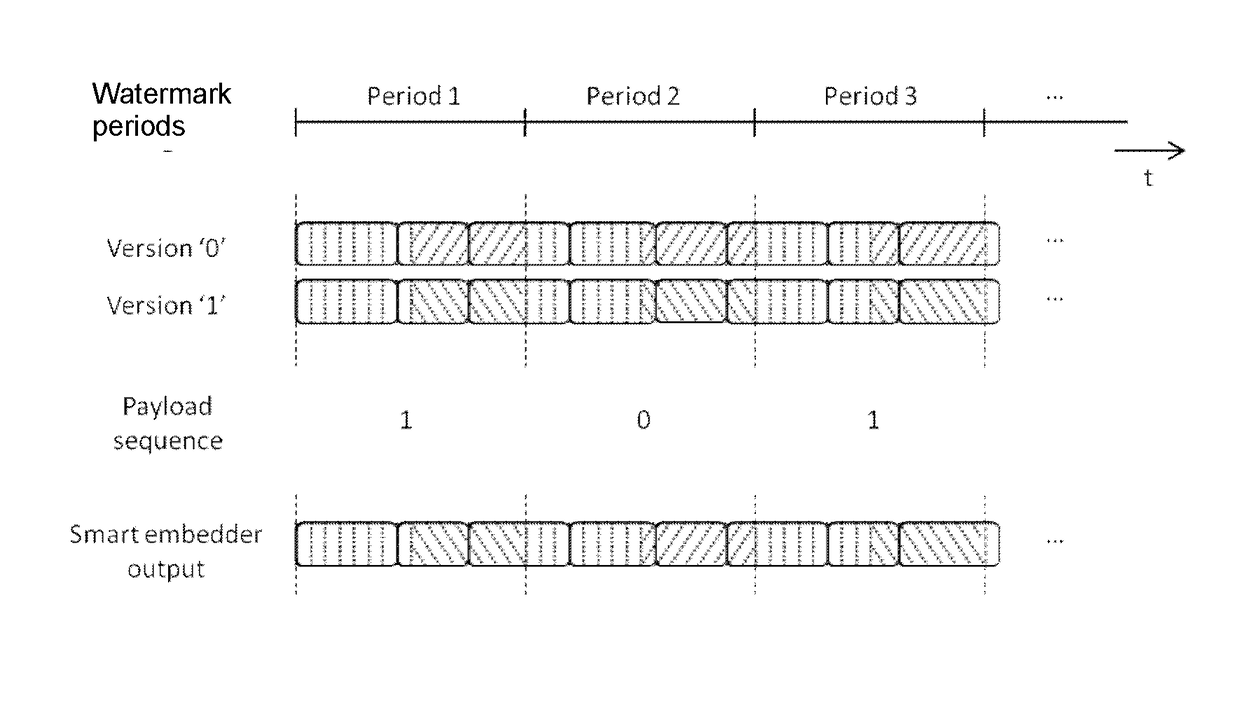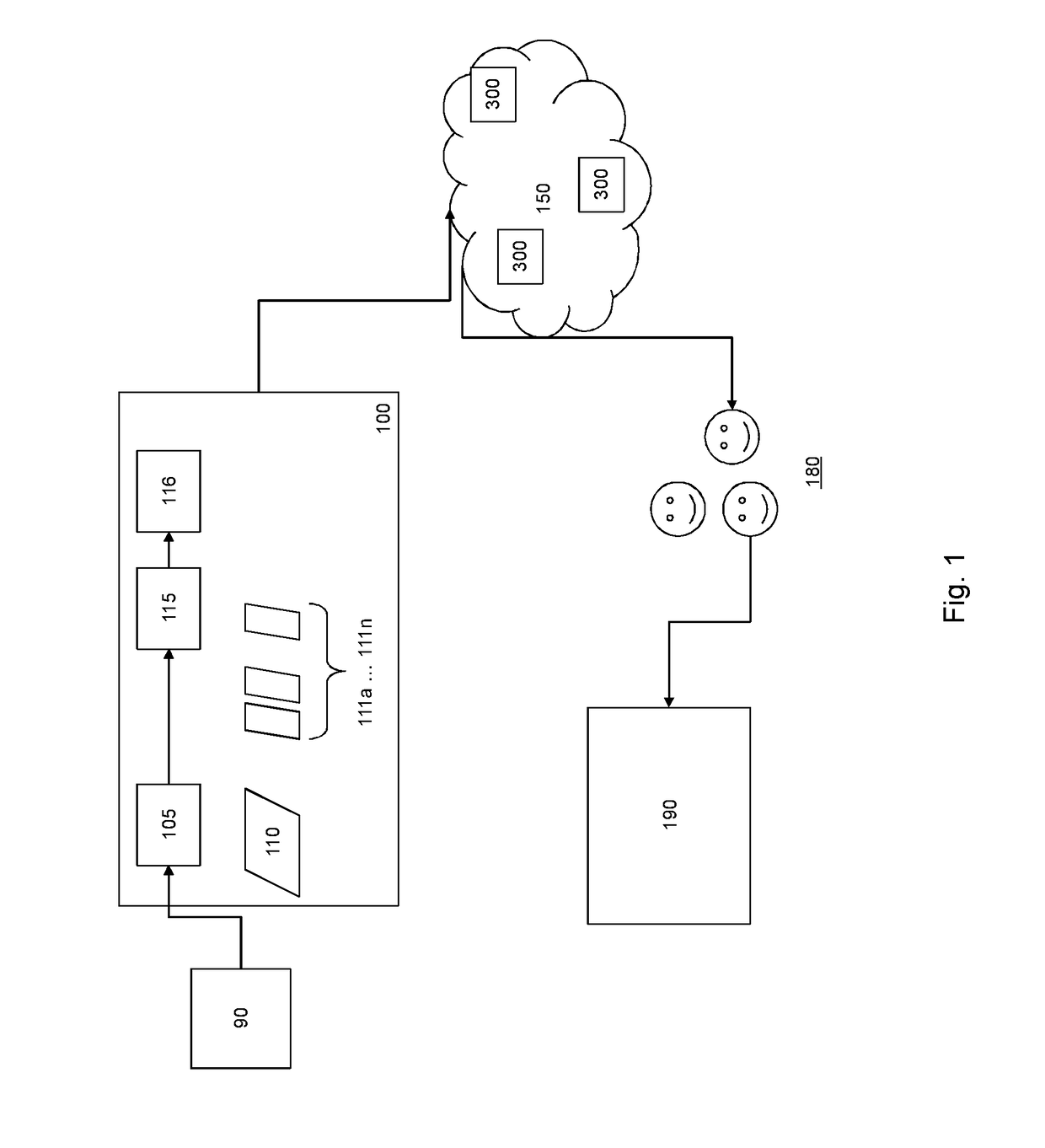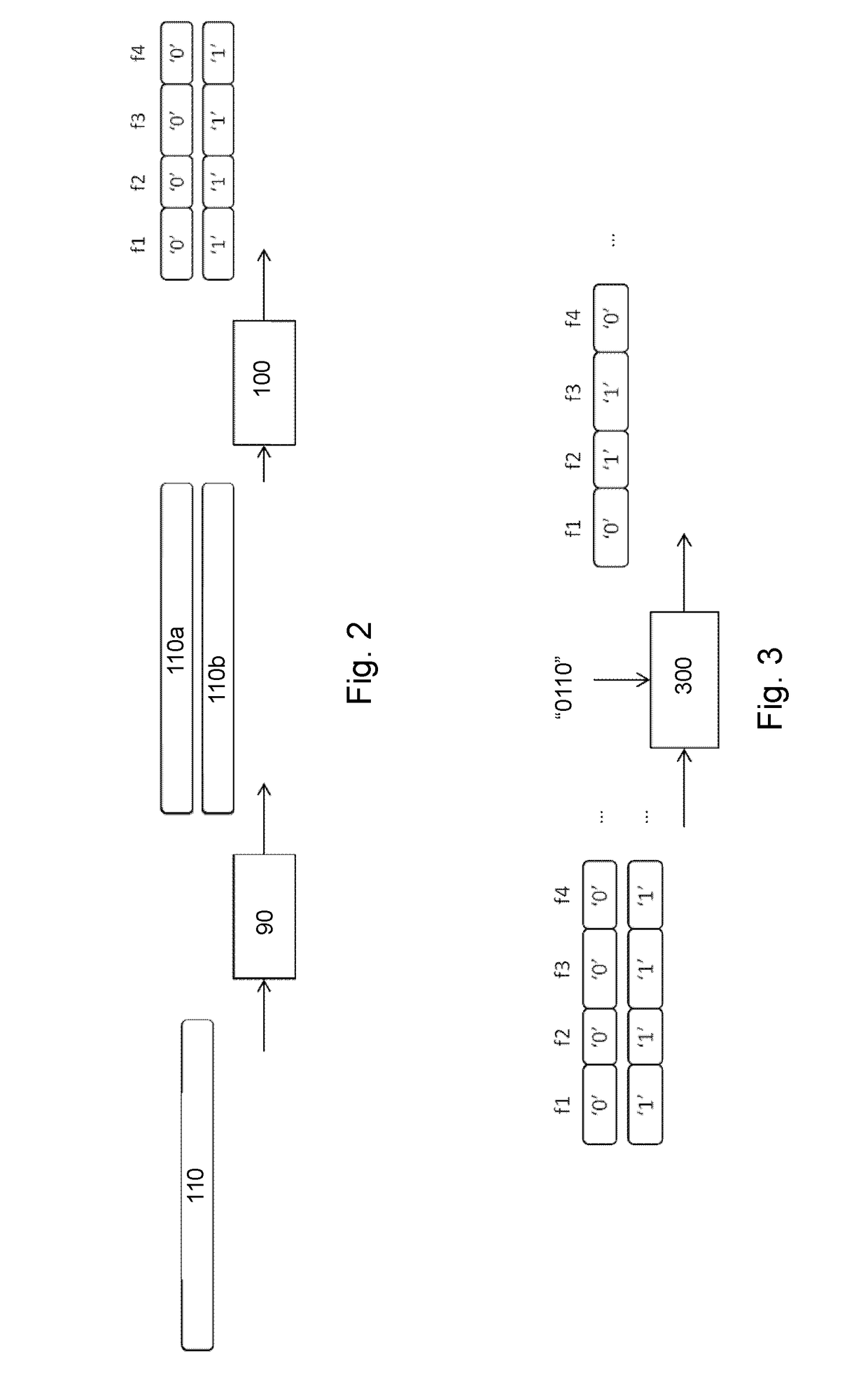Method and system for watermarking content prior to fragmenting
- Summary
- Abstract
- Description
- Claims
- Application Information
AI Technical Summary
Benefits of technology
Problems solved by technology
Method used
Image
Examples
Embodiment Construction
[0027]FIG. 1 schematically illustrates a content distribution architecture employing the method of the invention. The architecture generally comprises an encoder 100, a transport medium 150, recipients 180 and a detector 190.
[0028]The encoder 100 employs divider 105 to divide the content 110 into fragments 111a, . . . 111n, and transcodes each of these fragments using transcoding module 115. Transcoding generally involves translating the fragments into a format suitable for distribution over the transport medium 150 for reception and use by the intended recipients. Optionally in addition the fragments are encrypted as well, using encryption module 116.
[0029]The division into fragments depends on the characteristics of the content and the configuration of the system, and is usually done to realize the most efficient trans-coding, e.g., the fragment boundaries may be chosen at scene changes to allow for efficient video compression. The fragments may vary in duration, but usually have ...
PUM
 Login to View More
Login to View More Abstract
Description
Claims
Application Information
 Login to View More
Login to View More - R&D
- Intellectual Property
- Life Sciences
- Materials
- Tech Scout
- Unparalleled Data Quality
- Higher Quality Content
- 60% Fewer Hallucinations
Browse by: Latest US Patents, China's latest patents, Technical Efficacy Thesaurus, Application Domain, Technology Topic, Popular Technical Reports.
© 2025 PatSnap. All rights reserved.Legal|Privacy policy|Modern Slavery Act Transparency Statement|Sitemap|About US| Contact US: help@patsnap.com



